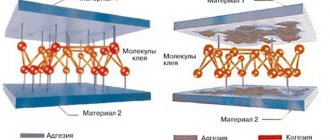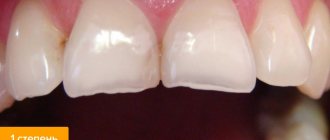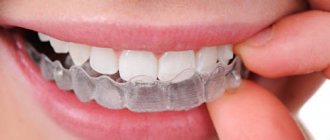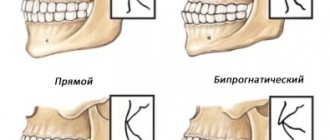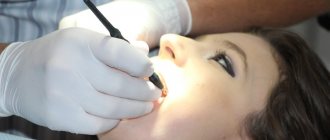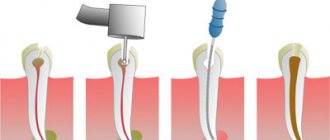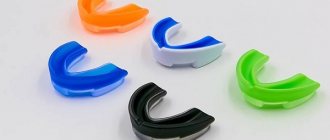A boxing mouthguard is a mandatory attribute for a fighter in the corresponding type of martial arts. The presented piece of equipment can absorb about 40% of the force of impacts, providing good protection for teeth. If an athlete does not have a mouth guard, then he is simply not allowed to participate in the fight. And this is due to the following properties of this element of equipment:
- Protecting teeth from chips that can get into the larynx and injure it;
- Protection of the oral cavity from cuts and wounds;
- Absorption of the impact force passing to the temporal part of the head from the jaw
Note that the mouthguard is used not only in martial arts, but also in some other sports disciplines, for example, in hockey and alpine skiing.
What is a mouth guard for?
A boxing mouthguard (cover, plate, dental caps, protective caps) is a special protective device that exactly follows the shape of the human jaw. A correctly selected and applied plate does not cause pain or discomfort to the athlete.
A mouthguard is one of the mandatory elements of sports equipment, without which a fighter is not allowed to fight. Its main purpose:
- protecting teeth from falling out or breaking;
- protecting the oral cavity from injury from a chipped tooth;
- protection of gums from cuts;
- preventing the biting of lips, tongue and cheeks during impact;
- reducing the risk of concussion;
- reducing the risk of cervical vertebrae displacement;
- partial protection against knockout.
Unfortunately, newcomers to the world of sports often realize the importance of a mouthguard only after they “lose” a tooth or two in sparring or a fight.
Indications and diagnosis
Wearing mouth guards is indicated in the following cases:
- pain in the head caused by disturbances in the position of the TMJ;
- bruxism;
- asymmetry of the facial contour;
- hearing impairment of unknown nature;
- mobility of the mandibular arch is limited;
- there is a feeling of distension in the joint area;
- diction disorders caused by incorrect jaw position or TMJ dysfunction;
- discomfort, pain in the cheekbones, aggravated by chewing and talking;
- facial muscles get tired quickly.
There are few contraindications, these include:
- increased activity of the cheeks, tongue, lips;
- acute inflammatory processes of soft tissues of the oral cavity.
To diagnose the disorder and calculate a correction scheme, the doctor prescribes the following research methods:
- obtaining an x-ray, performing a computed tomography to assess the condition and structure of the joint tissues;
- electromyography to analyze muscle tone;
- Dopplerography, MRI.
Based on the data obtained during diagnosis, the doctor selects the type and thickness of the mouthguard, determines the conditions and duration of wearing the structure.
How to properly wear a protective plate during combat?
Before putting on a boxing mouthguard, you should prepare it. There are burls that must first be boiled. After which you should adjust it to your jaw, trim off unnecessary parts. There are also protective plates that do not require preparation and can be put on immediately. Once you have a mouthguard specifically for your jaw in your hands, you can start using it.
How to put on a boxing mouthguard:
- Put on the mouth guard and make sure both jaws are closed completely.
- It should sit comfortably on the teeth and cover the teeth and gums tightly.
- If you're comfortable with this skid plate, then it's for you. If there is discomfort during use, the protection should be adjusted or changed.
If you are unable to fit the protective plate comfortably, it may be made by a bad manufacturer. Often, cheap equipment is not comfortable or of good quality, so it will not protect you properly.
Preparation and installation
Despite the fact that dental guards differ in design and properties from braces, before their manufacture the patient must also undergo mandatory training, which consists of several stages.
Sanitation of the oral cavity
Stages of preparation for the manufacture and installation of aligners:
- complete sanitation of the oral cavity, including professional teeth cleaning and removal of hard dental plaque;
- X-ray examination of the entire jaw from the lateral projection and direct projection with obtaining a panoramic image;
- photographing the patient’s face (profile and full face) with a smile and with his mouth closed;
- photographing the surface of the teeth, as well as the dentofacial system in physiological (habitual) occlusion.
How to install a mouthguard
The production of medical aligners is carried out by a special orthodontic technologist, who carefully studies the available materials and makes a decision on the possibility and advisability of treatment with aligners. In order for the doctor to make a suitable model, he will also need to study the diagnostic and working casts and occlusal impressions that the orthodontist makes in the clinic at the initial preparation stage.
After the mouth guard is ready, the patient needs to come to an appointment, where the orthodontist will perform a test fitting and tell you how to put on the device, how long to wear it and how to properly care for such structures.
Retention tray after braces
Note! Dental teeth are made in two ways: using a volumetric scanner and printer (the process is fully automated) or manually with manual pitch adjustment. The second option is considered preferable, as it allows you to achieve maximum anatomical accuracy and minimize possible errors that are inevitable when using a 3D printer.
Which mouthguard to choose
When choosing a boxing mouth guard, remember how much a visit to the dentist costs. “Repairing” one tooth will cost more than a good insert.
Production leaders refused to produce double-sided protectors (for both jaws). Therefore, we will not consider them.
Single-sided plates, as you now know, come in one-, two- and three-layer types. Prices for single-layer protectors start from 150 rubles.
A reliable three-layer Everlast mouthguard , with the maximum degree of protection, will cost 1000-1100 rubles.
Need recommendations from MMA fighters - choose Venum . The defense was created by fighters based on personal experience. With such a boxing mouth guard you can go into the ring. Professional protection costs 1200 to 2500 rubles.
If you want a bright design from British aristocrats, check out Opro mouth guards .
The undisputed favorite remains the brand - Shock Doctor . Three-layer protection, a wide price range, warranty obligations - this is the number one policy.
Choosing protection for a child
A children's mouthguard is different in size from an adult's. Manufacturers produce two types of earbuds.
Children's – up to 10 years old, for a child under 140 cm tall. Adult – over 10 years old, for an athlete taller than 140 centimeters.
If the mouthguard turns out to be large, then the size is adjusted after “trying on”. Cut the long ends of the plate with a sharp knife or blade. If necessary, the protector can be “cooked” again.
The OPRO company produces special mouth guards for children . Professional orthopedists take part in the development of new models.
If your child has braces, purchase a specialized mouth guard. It’s called “for braces.”
The process of “cooking” the mouth guard. Why is this necessary?
The “cooking” process involves adjusting the protective plate to the characteristics of your jaw. As a rule, thermoplastic mouth guards are subject to “cooking”. The packaging of this protective element contains detailed instructions for its preliminary preparation before use.
Each manufacturer has its own characteristics, but in general the order is approximately the same:
- Boil water;
- Place the mouth guard in boiling water for 20-25 seconds;
- Remove the plate and cool slightly;
- Bite the mouthguard with your teeth;
- Remove the plate after 3-5 minutes;
- Place the resulting “protection” in cold water.
After the procedure, the plate should accurately replicate the features of the jaw. If an unsatisfactory result is obtained, the process can be repeated again.
Color
The color of the mouthguard is not regulated by sports organizations. Manufacturers produce a variety of options. Not only models of different colors are sold - there are mouth guards with drawings and inscriptions.
Manufacturers offer products with various flavor interpretations, with mint flavor being the most popular. This plant is an antiseptic; it not only serves as protection against pathogenic bacteria, but also freshens breath.
Coaches recommend that their players choose mouthguards of light colors, without any smell or taste, so that they do not remind anyone of their presence and do not distract the athletes during a fight or game.
How to properly weld a mouth guard for boxing
The most popular thermoplastic mouth guards must be “prepared” before use, that is, using heat treatment, they must be adjusted as much as possible to the individual jaw structure. Beginners often have problems with this: one is afraid of overheating the protection, and it does not soften, while another, instead of a mouth guard, ends up with a completely melted piece of material that bears little resemblance to the original product. To avoid wasting money, you can take two copies and practice on the cheapest one first.
Clear teeth marks are visible on the “prepared” mouth guard
How to cook kapa correctly:
- the edges of the mouthguard are trimmed if it is large or causes a gag reflex;
- prepare two bowls, one with boiling water, the second with cold water;
- the mouthguard is immersed for 20-60 seconds (depending on thickness and hardness) in hot water;
- then it is quickly transferred to cold water for a few seconds so as not to get burned;
- The mouthguard is put on the teeth and pressed tightly and bitten, helping with your hands and tongue;
- so that the protection remembers the shape, hold it in the mouth in the desired state for about a minute;
- Finally, the mouth guard is dipped into a container of cold water and waited for 5-10 minutes until it hardens completely.
The result should be an onlay that fits perfectly on the teeth and adheres to them independently. On a properly “prepared” mouth guard, teeth marks are clearly visible, but there are no too thin, almost bitten places. Such protection does not interfere with the boxer, but ensures minimal damage even from crushing blows from the opponent.
Overlay thickness
The thickness of the mouth guard is affected by the number of layers. Manufacturers offer single-layer and multi-layer models, differing in the level of protection and other parameters.
Single layer
Single layer plates provide single protection. When choosing such a mouthguard, pay attention to the front (outer) wall - it should be high enough. The protection of the gums and the redistribution of the impact load - the transfer of a certain part of the impact from the teeth to the gums and palate - depend on the height of the side.
Multilayer
Most boxers choose a two-layer mouthguard - it creates double protection. Its outer layer is tougher than the inner one. It is made of rubber. Its function is to absorb and dissipate impact force.
The second layer - the inner one - is much softer than the outer one. It is made of gel and exactly follows the shape of the teeth and jaw. The purpose of the inner layer is to absorb shock.
There are manufacturers offering three-layer models. The structure is reinforced with special inserts for the outer layer. The inner layer has shock-absorbing inserts.
What mouth guard are you using?
Single layer
41.67%
Multilayer
58.33%
Voted: 48
Boxing mouthguard sizes and flavors
To make boxing comfortable, and for the mouthguard not to interfere with breathing and other functions, it should fit your teeth like a glove. Unfortunately, there is no gradual gradation of sizes; pads are divided into three types: children's, women's, men's. It is necessary, in accordance with age and gender, to choose an available option. If the mouthguard is small, then it is impossible to do anything. An overly large mouth guard can be trimmed from the edges, and then, if it is thermoplastic, the protruding corners can be smoothed out.
The smallest mouthguards are designed for young fighters
An interesting type of mouth guard is flavored. According to manufacturers, they prevent drying of the oral cavity, help normalize breathing and refresh it. Due to the fact that the flavor is embedded in the material, the service life of the mouth guard is long and is not limited to a couple of uses. You can choose protection with the flavors of orange, mint, apple, lemon, and even chewing gum. The downsides are the distraction factor and the fact that the taste gets boring quickly.
Neutralization of bruxism
Bruxism affects up to 60% of children and about 12% of adults. But the data for adults is unreliable - who will record this phenomenon in lonely people in old age, when they are left alone? So the problem can be considered global; this condition occurs in people of all ages, genders and races, and regardless of their social status.
The load on the teeth during grinding with their gradual loosening, as well as the abrasion and crumbling of the enamel, can be neutralized by a mouthguard applied before bedtime.
Features of alignment using a mouthguard
To straighten your teeth, you need to visit an orthodontist. The specialist will examine the oral cavity and tell you whether mouth guards can be used. If no contraindications are found, then a three-dimensional cast is made , and then a plaster model and several aligners are created, taking into account individual characteristics. In particularly difficult cases, the kit contains about 30 products.
At the next visit, the first tray is installed, and the rest are given to the patient. During the treatment process, a person replaces the structure every 2-3 weeks. In addition, it is recommended to visit a doctor every 1-1.5 months to monitor the alignment of your teeth.
The duration of treatment directly depends on the degree of deformation of the dentition. In the simplest cases, it will take only 2-4 months to correct the defects, and in complex situations, treatment will take 1-2 years.
Indications for use
Medical factors that determine the need for a course of treatment using night guards include:
- The need to correct anomalies and defects in the dentition;
- Restoring the correct structure of the bite;
- The need for treatment of pathologies of the temporomandibular joint;
- Completion of orthodontic correction using braces.
It is worth emphasizing that the mode of wearing a night guard, although it involves using the device only during sleep, requires strict adherence to medical instructions - otherwise, achieving the desired effect will be extremely problematic. It is necessary to regularly treat the product by rinsing it with warm water and cleaning it with a soft brush, use the supplied container for storage, and adhere to a wearing and replacement schedule. If damaged, the orthodontic device must be replaced, since the damaged configuration can have a negative impact on the jaw region.
How to “cook” a mouthguard correctly
Almost all existing thermoplastic linings are prepared according to the same principle, and most often a dental guard for boxing is sold with instructions that indicate everything necessary. In general terms the process looks like this:
We choose any container for boiling water, into which the selected mouthguard can fit entirely.
Place the pan on the fire, let the water boil and lower the cover into it. Make sure it is completely under water.
Keep in boiling water for no more than half a minute.
Remove from the water, wait a few seconds to avoid burns (be careful not to let it cool completely), and place it on your teeth. After this, clench your jaws tightly, apply pressure and press the outer sides of the mouth guard to your teeth.
Proper preparation can be judged by how comfortably and tightly it sits on the teeth when cooled.
General overview
The term “mouth guard” is quite common and is familiar to every athlete or fan who is interested in contact sports or martial arts. A silicone or polymer onlay, made according to a standard template, or based on casts from the jaw, completely covers the dentition, tightly adhering to the enamel, and eliminating displacement or discomfort.
Today, in order to buy a night guard for teeth in St. Petersburg, it is enough to place an order at any large pharmacy. However, it is worth considering that such products do not take into account the peculiarities of the anatomy of the dentofacial apparatus, and therefore can only be used as a protective pad, effective for diagnosed bruxism. To achieve a therapeutic result, expressed in the alleviation of negative symptoms, it is recommended to contact the clinic and order the production of a custom mouth guard.
How are aligners different from braces?
Both mouthguards and braces are used to correct bites in adults and children, but these designs have significant differences that determine both the disadvantages and advantages of each of them. To make it easier for patients to navigate in choosing the appropriate correction method, below is a table with a comparative analysis of both systems.
Aligners or braces
Table. Mouth guards and braces: comparison.
| Characteristics | Mouthguards | Braces |
| The effectiveness of bite correction | Effective only for minor bite pathologies. | Can be used for severe deformation of the dental system (including severe and complicated cases). |
| Wearing period | From 8-10 months to 2 years. | From 1 year to 2-3 years. |
| Possibility of use in childhood | Can be used in childhood (treatment of bruxism using silicone teethers is especially common). | It is acceptable to use in children over 5 years of age, but the possible risks of enamel damage must be taken into account. |
| Visibility to others | Mouthguards are made of transparent silicone or bioplastic and are practically invisible on the teeth, which makes their use more comfortable and provides psychological comfort to the patient. | Vestibular braces, which are installed on the front surface of the teeth, are clearly visible to others. If these are ordinary metal braces, wearing such a design can cause emotional distress for the patient (especially children and adolescents). |
| Comfort to use | Adaptation to the aligners usually occurs almost immediately after installation. In rare cases, this process may take 3-5 days. | Nagging pain and discomfort when wearing braces can appear at any time as the teeth gradually shift. The duration of such periods can range from 2-3 days to several weeks. |
| Degree of gum trauma | Due to the soft materials, the mouthguards practically do not injure the mucous membranes and soft tissues of the oral cavity. | Braces can have a destructive effect on tooth enamel and damage the mucous membranes of the tongue, lips and gums. |
| Possibility of removal without visiting the dental office | Maybe. | Impossible. |
| Ease of hygienic care | The mouthguard can be easily removed from the mouth to clean the teeth and the structure itself, which ensures a high level of hygiene during orthodontic treatment. | The level of hygiene when using brace systems is quite low due to the inaccessibility of surfaces covered with orthodontic brackets and locks. |
| Price | From 6 to 15 thousand rubles for one mouth guard. | From 70,000 rubles. |
At first glance, it may seem that treatment with mouth guards is a cheaper option compared to braces, but this is not the case. Aligners must be changed regularly, and one set can contain up to 25-30 drops per course of treatment. The total cost of the course is usually more than 200 thousand rubles.
Diagram of the results of treatment with mouthguards
We invite you to read: Chronic periodontitis treatment - Dr. Dent
Possible causes of bruxism
- Congenital or acquired defects of the jaw caused by colds, infectious diseases or injuries.
- Dental problems. Uncomfortable dentures and braces, unsuccessfully installed fillings made of poor quality material, incorrect bite. With the latter, a person unconsciously tries to put his teeth in the correct position, and since the process is not controlled, the chewing surfaces make a grinding sound.
- It is possible that there are worms in the body - the relationship with this is not obvious, but parasites always cause a deficiency of B vitamins, and their deficiency, in turn, affects problems with emotional stability.
- Psychological trauma or prolonged stress, psychosis, depression, which can cause spasm in the masticatory-jaw muscles.
If in children bruxism is most often caused by physiological reasons, then in adults it is caused by psychological ones.
In this regard, the opinions of psychoneurologists are interesting: according to them, during the day a person is distracted from his pathological state by many problems, but the muscles “remember” their usual work and as soon as peace sets in, the affective charge accumulated during the day is realized in attacks of bruxism.
Design features
Here we can distinguish three main types, we will arrange them in order of increasing quality and characteristics.
Standard (cast)
These are universal factory mouthguards that do not have outstanding characteristics. They are made of plastic (there are also silicone versions), inexpensive, and quite suitable for beginner amateur athletes. The main disadvantages are poor fixation, standard shape, without the possibility of changes, and insufficient thickness.
Thermocaps (thermoplastic)
This type of mouth guard is a kind of semi-finished product - the product requires individual adjustment, which is done at home (“brewed” and conveys the structural features of the teeth, jaw, and bite). They can have a multilayer structure (a combination of materials is used) and have good fixation.
Custom mouth guards
They are used by professional athletes and are made to order from the dentist (an individual impression of the jaw and bite is made). These mouthguards provide maximum protection and have shock-absorbing properties. Modern technologies make it possible to produce neuromuscular mouthguards that are able to respond to changes in muscle forces (involuntary clench/unclench the jaw) and find the optimal position.
Price
The cost of mouth guards varies widely. You can find a cheap plastic product for 200 rubles, and there are models made using innovative technologies that cost several thousand rubles.
Examples of prices for mouthguards:
- plastic flavored mouth guard MoGo - 990 rubles;
- PAFFEN SPORT thermoplastic mouth guard with mint flavor — RUB 1,390;
- transparent Fight Empire MG-10 mouth guard made of thermoplastic silicone (needs to be “cooked”) - 230 rubles;
- multi-layer mouth guard Venum Predator Mouthguard Black / White made of high-density rubber alloy - RUB 1,572;
- two-layer silicone mouthguard Fight Empire — 534 rub.
Why do you need dental guards?
Dental mouthguards are needed to correct deficiencies in the dentition. In accordance with the wishes of the patient and the condition of his oral cavity, the doctor selects a suitable system. Mouth guards are placed on the teeth to correct anatomical defects, to consolidate the results of orthodontic treatment, or during teething, to set the teeth in the right direction. Onlays are also used in aesthetic dentistry.
To correct the bite
Most often, transparent overlays are used to correct anatomical defects. They are an alternative to braces and can easily replace metal braces. In this case, aligners have advantages, since they do not require special dietary restrictions and do not interfere with the aesthetics of the smile with metal plates.
On a note!
For adults, this option for correcting defects is ideal. It is less suitable for children, since it is not always possible to control how long the structure will be worn.
Mouthguards for correcting bites require constant wearing. At the initial stages of treatment, they can be removed only for hygiene procedures and during meals. The patient needs to wear the system around the clock, so it cannot be abandoned even at night. You will have to wear aligners to correct your bite from six months to one and a half years, depending on the severity of the anatomical defects. Plates are not suitable for all patients, since in difficult cases the installation of braces is still required.
For teething in children
The eruption of permanent teeth in a child may occur unevenly and untimely. If the baby tooth has not yet fallen out, but the molar is already growing, then it may take on the wrong position.
On a note!
Up to 50% of children aged 8–10 years experience crooked teeth. To avoid having to get braces in the future, you need to take care of the beauty of your smile line now.
Teething mouthguards for children are made individually. Most often, their use is limited to 4-6 months.
For whitening
Trays can be used to lighten enamel. Such designs are most often used at home and do not require an additional visit to the dentist.
The principle of operation of the whitening pad is based on preventing the rapid washing off of the lightening substance from the surface of the tooth. Using a syringe, it is applied to the enamel, after which a tray is secured on top. The wearing period of the system is described in the instructions for use and differs for different whitening substances.
For the treatment and restoration of enamel
Trays for enamel restoration are often used after professional whitening. As a result of exposure, tooth sensitivity increases. For treatment, dentists prescribe remineralizing gels with a high fluoride content. They are applied to the mouthguard, after which the lining is installed on the dentition. For each patient, the treatment period and duration of use of the medicine are determined individually.
For bruxism
Bruxism is a condition in which a person suffers from teeth grinding. Most often this happens unconsciously, during sleep or during stressful situations. Bruxism accelerates the wear of enamel. This leads to increased sensitivity and decreased aesthetics of the smile line. To protect against tooth friction at night, it is recommended to wear mouthguards. They are made of dense elastic material and are worn over the entire surface of the tooth or only half.
Retention systems after wearing braces
Correcting a malocclusion using a braces system is an effective and reliable method. After the jaw and dentition have assumed the correct anatomical position, the staples are removed. However, for old times’ sake, teeth may begin to shift in the opposite direction. Sometimes they take a completely unexpected position. Aligners or retention systems help prevent this complication.
The structures are made of rigid transparent material individually for the patient and require use for 20-22 hours. Such mouthguards hold the teeth in a new position and prevent them from becoming deformed again.
Protective sports
Protective sports systems have different characteristics and indications for use. They are:
- three-layer – suitable for water polo, rugby, hockey, boxing;
- two-layer – required for martial arts, field hockey, skateboarding, basketball and American football;
- single-layer – needed by non-professional athletes, as well as children who play sports.
Important!
When playing some sports, it is necessary to wear a mouthguard, since there is a high risk of tooth injury. This can lead to premature loss of the unit and the need for prosthetics. All this is associated with financial costs and loss of time.
What it is?
Aligners in dentistry are soft and elastic devices in the form of a toothbrush, which have an arched shape and contain from 28 to 32 caps (according to the number of teeth in the mouth). Such structures are made individually based on an impression that the orthodontist makes during the initial appointment. If a patient is diagnosed with infectious and inflammatory diseases of the gums and teeth, they are first treated (opening and draining abscesses, stopping inflammatory processes, filling teeth, etc.).
Aligners are made individually
Bioplastic is used as the main material in the manufacture of aligners. This is a soft and elastic plastic made from vegetable oils, corn starch, biomatter using microorganisms. The most practical and convenient are mouthguards made of polycarbonates (mixed polyesters of carbonic acid and dihydric alcohol), made by thermoforming. Such aligners are characterized by increased strength, resistance to external influences and a minimal degree of trauma to the soft tissues of the oral cavity.
How do aligners work?
The main difference between dental aligners and braces is the ability to remove the device without visiting a dental office. The mouth guard can be removed from the mouth at any time, which helps eliminate psychological discomfort and ensures a higher quality of hygiene during the treatment period.
Installation of braces
Other characteristics of dental trays:
- The period of use of the aligners is calculated individually and ranges from 8-10 months to 2 years;
- mouth guards must be changed regularly (the interval between changes ranges from 2-4 weeks to 3 months);
- The device is cleaned in the traditional way (rinsing with soapy water and brushing with a toothbrush);
- Pain and discomfort characteristic of the initial period of getting used to braces are absent when using mouth guards.
Mouthguard for correcting bite (aligner)
A person stops feeling the mouthguard in his mouth within 5-30 minutes after putting it on. In exceptional cases, longer adaptation is possible - up to several hours - but no more than 5-8% of patients encounter this problem.
Important! The only disadvantage of soft teethers is moderate discomfort during a conversation, which can persist for several days after the initial installation of the device. A silicone or polycarbonate mouth guard thickens the dentition, which in some patients affects the quality of speech and diction. Adaptation to this property of aligners rarely lasts longer than 3-5 days.
Photos before and after treatment with aligners
How to “cook” a boxing mouthguard, instructions (video)
In fact, there is no need to cook the kapa. The workpiece is immersed in hot water (80-90° C) for 30-60 seconds. The exact time and water temperature are indicated in the instructions.
Then the plate is taken out, shaken (or dipped in cold water for 1 second) and put on the teeth.
The plate is pressed on the teeth with your fingers. The insert must be pulled over the gum and pressed tightly against the teeth.
After the protector is placed on the upper jaw, you need to close your teeth and bite down. There is no need to clench your teeth too hard to avoid biting through the protector.
The last step is to immerse the liner in cold water.
To reinforce the information, watch the video. It's easier to see once than to read twice.
Models
Manufacturers offer several options for mouth guards, differing in design, method of attachment and level of protection.
Unilateral
Such mouthguards are worn only on the upper jaw. This is quite enough to perform protective functions.
Pros:
- comfortable, do not cause discomfort;
- are securely held on the teeth (if subjected to proper cooking);
- allow you to speak during sparring.
It is the one-sided models that are recommended by most sports federations - boxing, karate, sambo, taekwondo and others. Athletes must wear a one-sided mouth guard when competing or they will be disqualified.
Double sided
These mouthguards provide even more protection than single-sided models. They are usually recommended to be worn during training and sparring. Double-sided models are worn on both jaws—upper and lower—providing protection for both rows of teeth.
Apart from a high level of protection, double-sided mouth guards have no other advantages, only disadvantages:
- they are not allowed to talk during sparring;
- you need to breathe through a special hole in the product.
Using two-way models requires certain skills - learning to breathe correctly and remain silent when you want to speak. It is extremely important to pay attention to these points when choosing and purchasing a mouth guard.
With strap
These are single-sided mouthguards with a fixing strap. It is located on the front of the product. The strap is needed to attach the mouthguard to external elements - for example, to a boxing, hockey, baseball or other helmet.
Models with straps are usually used by athletes who are at risk of swallowing a mouth guard? - hockey players, baseball players, etc.
For braces
Manufacturers have taken into account that among the athletes there may be braces wearers. For such cases, single- and double-sided mouthguards are produced. The first are intended for those who have braces on one jaw, the second - on two.
Mouth guards for athletes with braces, unlike regular ones, have a special groove designed for a tighter and more secure fit.
When a person wears braces, the position of his teeth gradually changes. The mouth guard should neither fix them in their original form nor interfere with their displacement.
Trays for braces are made from:
- Silicone. It does not cook and does not prevent teeth from moving.
- Hot melt plastic. Mouth guards made from this material need to be digested periodically.
Rating of the best wrestling caps 2022
We can immediately make a reservation that it is definitely not recommended to buy mouth guards from Adidas. Yes, an old world brand that produces excellent sporting goods somehow turned out to be weak in the production of protective dental guards. This is exactly the rare case when you simply throw money away by being fooled by a brand.
Inexpensive models
Ray-sport
Thermoplastic inexpensive silicone pad, intended for adults. Sold complete with a plastic box.
Type: thermoplastic.
Gender: unisex.
Age category: adults.
Average price: 200 rubles.
Ray-sport
Advantages:
- taking on an individual shape after cooking.
Flaws:
- single-jawed;
- You can buy this mouthguard only in specialized stores like Sportfighter.
Excalibur 1566
A simple transparent mouthguard of a given shape. For amateur training. Not suitable for professional sports and fights in the ring. Made in Pakistan. Tasteless and odorless, sits gently on the jaw.
Type: standard.
Gender: unisex.
Age category: adults and teenagers.
Average price: 300 rubles.
Excalibur 1566
Advantages:
- transparent material allows you to see the condition of the teeth;
- softness and comfort.
Flaws:
- single-jawed;
- given form.
EVERLAST 1-JAW. SINGLE
The mouthguard was originally created for boxing, but can be quite successfully used in other types of martial arts. Thermoplastic, requires preliminary cooking, after which it takes the individual shape of the owner’s teeth.
Type: standard.
Gender: unisex.
Age category: adults, large teenagers.
Average price: 350 rubles.
EVERLAST 1-JAW. SINGLE
Advantages:
- takes the individual shape of teeth;
- transparent material.
Flaws:
- single-jawed.
BN fight blue
A specially designed shape just under the upper and lower teeth not only softens impacts, but also distributes the impact force from the front to the back teeth. It fits very well on the teeth and has holes for breathing. This pad allows you to talk freely. The material is a special gel framed by a harder material. Supplied complete with a case.
Type: standard.
Gender: unisex.
Age category: adults.
Average price: 390 rubles.
BN fight blue
Advantages:
- comfortable shape;
- impact force distribution;
- air holes;
- two-jawed;
- perfectly protects lips.
Flaws:
- the form is predetermined and does not change.
Double-jaw boxing mouthguard in a plastic box
An excellent budget double-jaw model for a wide range of purposes: boxing, handball, hockey, martial arts, rugby, etc. Shapes the owner's teeth and comes in a plastic box.
Type: standard.
Gender: unisex.
Age category: adults, large teenagers.
Average price: 160 rubles.
Double-jaw boxing mouthguard in a plastic box
Advantages:
- universal for many sports;
- two-jawed;
- excellent price for such a model;
- transparent.
Flaws:
- manufacturer - not a well-known brand;
- material – silicone – monolithic throughout the entire pad, there are no other materials;
- The size is given, although it can be worn on almost any teeth.
Professional and expensive models
FLAMMA Iceman 2.0
A two-jaw mouthguard made of three materials: the gel takes the individual shape of the teeth, and rubber with acrylic cushions perfectly absorbs impacts. Equipped with holes for breathing. Suitable for all sports. Protects against ruptures, shocks, hemorrhages, and broken teeth.
Type: standard.
Gender: unisex.
Age category: adults.
Average price: 800 rubles.
FLAMMA Iceman 2.0
Advantages:
- good selection of materials that provide excellent protection and comfort;
- breathing holes.
Flaws:
- not thermoplastic.
Venum Challenger White/Black
A good manufacturer of mouthguards is the Venum company, which has proven itself in this business for a long time and firmly. The combination of gel on the inside and durable rubber on the outside gives an excellent fit to the jaw and protects against most possible injuries to the jaw and head during sparring. The breathing system allows you to breathe freely even during intense combat. Comes complete with a hygienic case.
Type: standard.
Gender: unisex.
Age category: adults.
Average price: 950 rubles.
Venum Challenger White/Black
Advantages:
- the combination of gel and rubber provides excellent shock absorption and load distribution;
- free breathing during combat;
- color allows you to quickly recognize bleeding.
Flaws:
- not thermoplastic.
Venum Predator Grey/Black
Stylish in design and very precise in execution, the mouth guard is used in professional UFC fights. This model was developed with the direct participation of professional boxers and takes into account all the needs of athletes. Equipped with breathing devices and shock-absorbing cushions. The onlay provides a two-stage distribution of the shock wave from the front teeth to the stronger back teeth. Hygienic case included.
Type: standard.
Gender: male.
Age category: adults.
Average price: 1650 rubles.
Venum Predator Grey/Black
Advantages:
- stylish design;
- excellent design, providing reliable protection in professional fights;
- breathing system, two-stage load distribution;
- the design was developed with the participation of famous professional boxers.
Flaws:
- dark color, which does not always allow one to assess the extent of damage.
Everlast EverShield 2
Thermoplastic mouthguard used in professional competitions. Withstands even very strong blows. And after cooking it takes the individual shape of the fighter’s teeth. Equipped with holes for breathing.
Type: thermoplastic.
Gender: unisex.
Age category: adults.
Average price: 1150 rubles.
Everlast EverShield 2
Advantages:
- professional model;
- excellent shock distribution;
- thermoplasticity.
Flaws:
- poor design.
MoGo Transparent Fruity
For lovers of pleasant sensations. Or rather, amateurs. The aroma layer is located outside, but is not sprayed, but partially embedded in the material. Thanks to this, a fresh aroma will accompany the fighting lady every training session. The combination of transparent plastic and soft but elastic gel allows the model to maximally protect the athlete from unpleasant maxillofacial injuries and avoid concussions.
Type: standard.
Female gender.
Age category: adults.
Average price: 1800 rubles.
MoGo Transparent Fruity
Advantages:
- stylish design;
- very good shock absorption and protection against injury;
- always fresh fruity aroma.
Flaws:
- quite high price;
- The aroma may become boring over time.
SHOCK DOCTOR GEL NANO
An excellent and quite inexpensive mouthguard for professional athletes and violent sports. Double protection, including an adaptive filler, will reliably protect the fighter’s teeth and prevent him from brain injuries. It stays very well in the mouth and does not create any interference with breathing or communication. In addition, thermoplastic in all other parameters.
Type: thermoplastic.
Gender: unisex.
Age category: adults.
Average price: 1150 rubles.
SHOCK DOCTOR GEL NANO
Advantages:
- professional model;
- thermoplasticity;
- withstands very strong impacts.
Flaws:
- not identified.
Which mouth guard did you choose?
Children's and adolescent mouthguards
Jabb JE-1713
Single-jaw mouthguard designed for teenagers in size. Simple, silicone, transparent. Comes with a case. Not very suitable for serious competitions, but quite suitable for everyday training, especially considering the low price. Supplied with a plastic box.
Type: standard.
Gender: unisex.
Age category: teenagers.
Average price: 190 rubles.
Jabb JE-1713
Advantages:
- teenage size;
- transparent material.
Flaws:
- the form is given;
- single-jawed.
FLAMMA Ice Hit orange
Double-jaw mouthguard for young fighters from 12 years old. The orange flavor is built into the material and will always delight the young athlete with a pleasant, fresh taste. The design of the model includes a soft gel to mold to the shape of the teeth, durable rubber for protection and acrylic cushions to distribute the shock wave. Breathing holes are available.
Type: standard.
Gender: unisex.
Age category: children and teenagers from 12 years old.
Average price: 850 rubles.
FLAMMA Ice Hit orange
Advantages:
- excellent shock-absorbing and protective design;
- the flavor is always fresh and safe;
- two-jawed.
Flaws:
- one taste. Might get boring.
FLAMMA-Lucky
For little fighters under 11 years old, such a two-jaw overlay was created. The soft inner material easily molds to the shape of the teeth, and the harder outer material protects against impacts and lip tears. Equipped with a breathing channel. The masonry does not prevent the athlete from talking. Comes complete with a case.
Type: standard.
Gender: unisex.
Age category: children under 11 years old.
Average price: 570 rubles.
FLAMMA-Lucky
Advantages:
- two-jawed;
- perfectly protects teeth and distributes the load;
- has a breathing channel.
Flaws:
- not thermoplastic.


